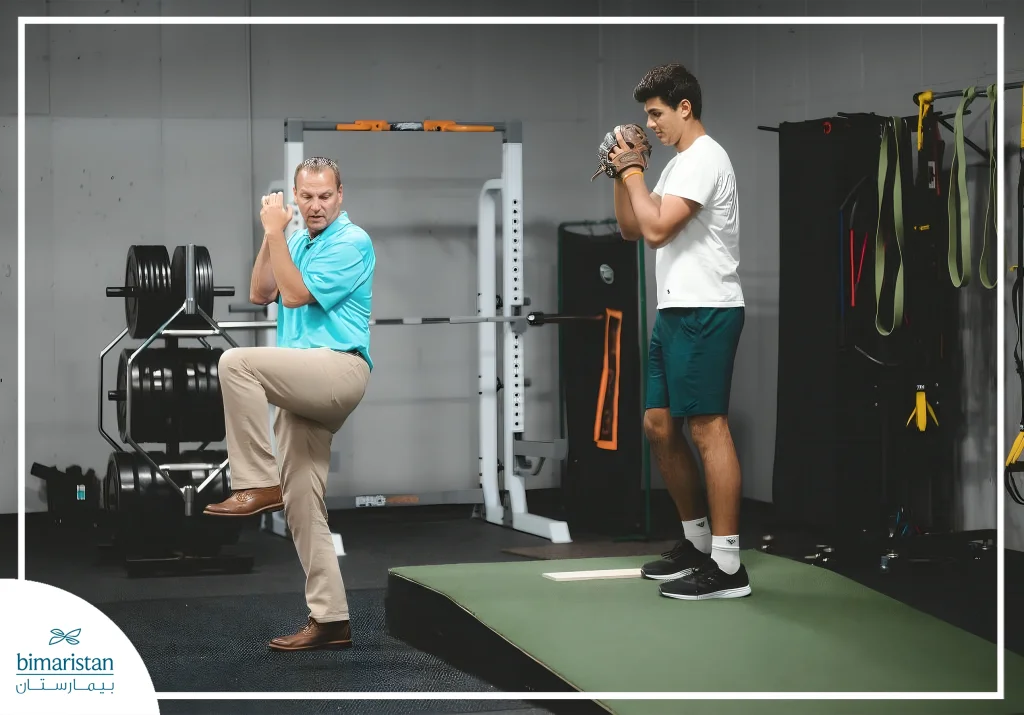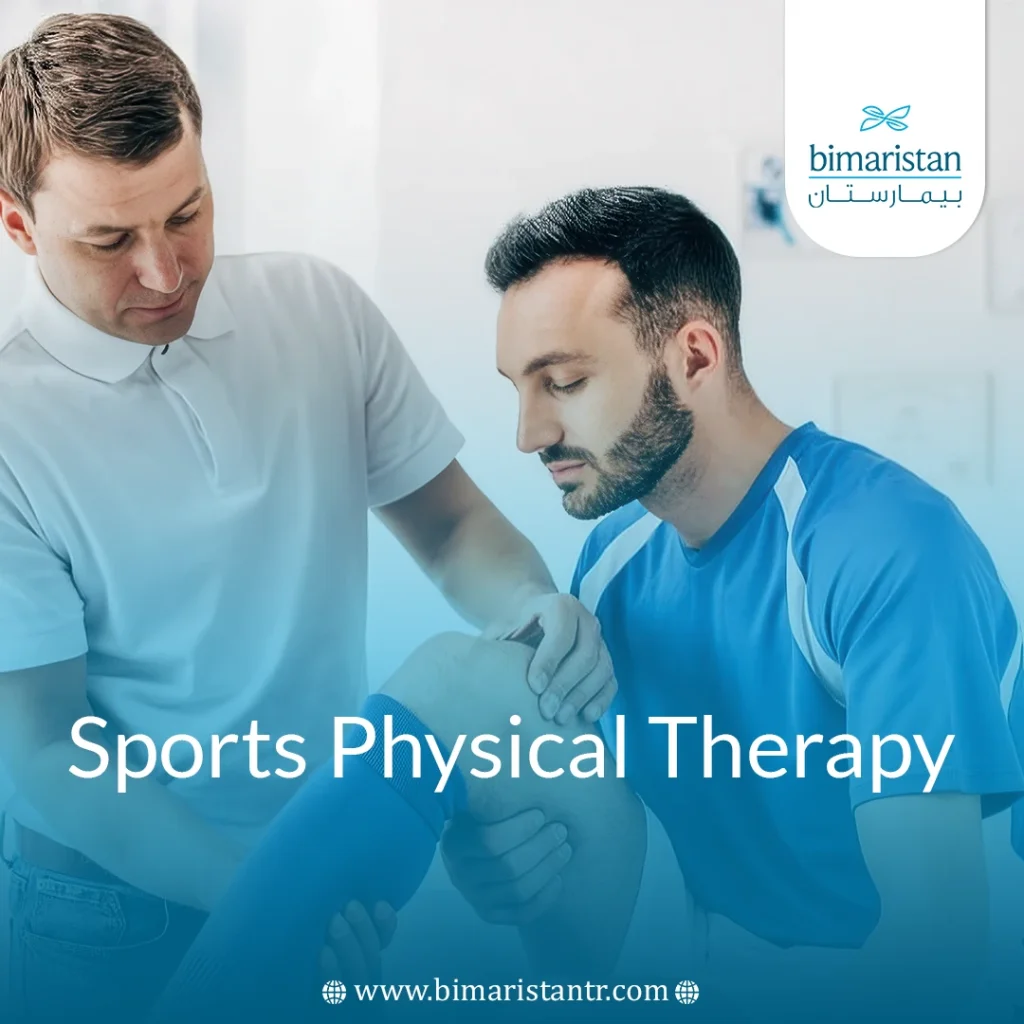Prevention and rehabilitation in sports physical therapy are essential to maintaining the health of amateur and professional athletes. Prevention programs reduce the incidence and severity of injuries by promoting strength, flexibility, and balance. Rehabilitation accelerates recovery after injury or surgery and minimizes time away from competition in an active approach involving the athlete and the treatment team. Sports physical therapy has evolved from a sub-sector to a separate specialty, encompassing prevention, assessment, treatment, and restoration of function.
What is sports physical therapy?
Sports physical therapy is a branch of physical therapy that focuses on the prevention of sports-related injuries and offers customized functional rehabilitation programs to restore mobility and performance. This type of treatment is done through individualized plans that include therapeutic exercises, manual therapy, and the use of modern techniques such as underwater walking and body weight reduction devices. Treatment is tailored to the type of sport and level of performance, whether for professionals or amateurs, with the aim of accelerating a safe return to activity and improving physical fitness while reducing the risk of relapses and future injuries.
In some cases, the role of sports physical therapy is not limited to repairing injuries but extends to supporting athletes who use specialized sports prostheses, such as runners or football players who are amputees.
Conditions treated by sports physical therapy
Sports physical therapy focuses on treating a wide range of conditions that affect athletes of all levels, including:
- Acute injuries: Such as muscle tears, joint sprains, and fractures resulting from sports trauma.
- Chronic overuse injuries: Tendonitis, low back pain from repetitive stress, and overuse syndrome.
- Rehabilitation after surgery: Especially after procedures such as ACL repair, meniscus repair, or fracture stabilization.
- Balance and flexibility imbalances: Such as joint instability or poor muscle control, are common in athletes returning from injury.
- Problems with joints: Knee, shoulder, or hip pain associated with excessive movement or incorrect technique.
Sports physical therapy techniques
Sports physical therapy is based on a range of clinical methods that have been studied and proven to be effective, including:
- Guided therapeutic exercise: Used to strengthen muscles, restore range of motion, and improve balance based on a functional assessment.
- Heat or ice therapy: To reduce inflammation and pain after acute injuries or intense exercise.
- Electrical stimulation and ultrasound: Used to stimulate muscles, relieve pain, and accelerate tissue healing.
- Athletic tape: Used to support joints and muscles during activity and reduce irritation or swelling.
- Progressive rehabilitation: A planned progressive program to restore function to an injured muscle or joint.
- Evaluate motor performance: To identify and correct motor errors or unbalanced distribution of effort to maximize efficiency and minimize the risk of injury.

Benefits of sports physical therapy
Sports physical therapy has a number of important benefits for athletes, including:
- Accelerate recovery and a safe return to activity: Through individualized rehabilitation programs that take into account the type of injury and level of performance.
- Improve strength, balance, and flexibility: Through therapeutic exercises that target range of motion and muscular control.
- Avoid re-injury: By correcting faulty movement patterns and improving body mechanics.
- Maximize athletic performance: Through motor retraining techniques and functional analysis of performance.
When do I need sports physical therapy?
A sports physiotherapist should be consulted in the following cases:
- When suffering a direct sports injury, such as an ankle sprain, muscle tear, or severe bruise, it is important to minimize pain and prevent the injury from worsening.
- When chronic pain persists during or after exercise, such as knee or lower back pain, it is caused by overuse or faulty technique.
- After a sports surgery, such as a cruciate ligament repair or shoulder tear, ensure safe and correct restoration of function.
- To improve athletic performance and prevent injuries by analyzing movements and correcting imbalances in the movement pattern.
How is a sports therapy plan designed?
The plan begins with an assessment of the athlete’s condition, including a clinical examination and kinematic analysis to determine the nature and cause of the injury. Based on this, an individualized treatment program is developed that takes into account the type of injury, the patient’s age, fitness level, and return to activity goals, and includes progressive therapeutic exercises and additional support techniques as needed. Progress is monitored regularly, and the plan is adjusted according to the body’s response, and the patient is encouraged to actively participate in each stage to ensure adherence and achieve the best results.
Sports physical therapy is not just about recovering from injuries; it is an essential element in enhancing performance and preventing future issues. When athletes, whether professional or amateur, adhere to the right treatment, they can minimize the amount of time they miss from training and competition and extend their athletic lifespan. Consulting with a qualified sports physiotherapist can make a significant difference to progress and improve overall performance through customized plans that meet each athlete’s needs precisely and effectively.
Sources:
- National Institute of Arthritis and Musculoskeletal and Skin Diseases. (n.d.). Sports injuries. U.S. Department of Health and Human Services, National Institutes of Health. Retrieved June 14, 2025
- Centers for Disease Control and Prevention. (n.d.). Returning to sports. U.S. Department of Health and Human Services. Retrieved June 14, 2025

